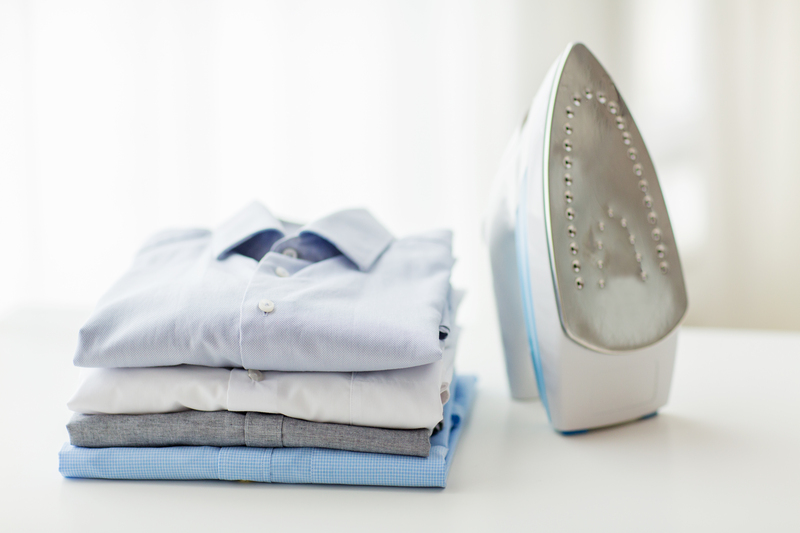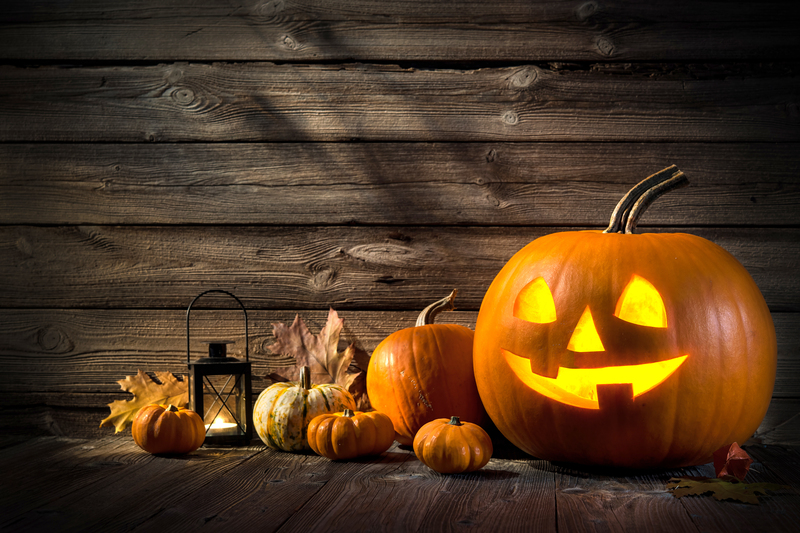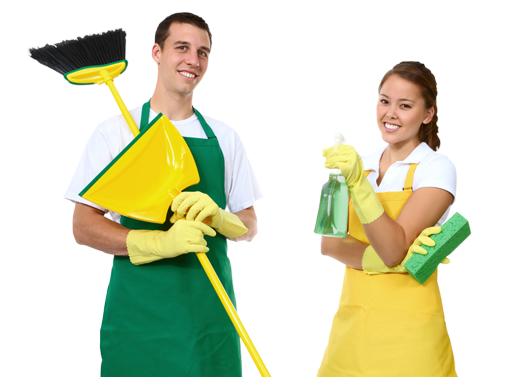How to Eliminate Stovetop Burnt-on Residue for a Gleaming Finish
Posted on 05/09/2025
How to Eliminate Stovetop Burnt-on Residue for a Gleaming Finish
Stovetops are the heart of every kitchen, bearing the brunt of daily cooking adventures. However, they're also magnets for burnt-on residue, grease splatters, and stubborn stains. If you've ever wondered how to eliminate stovetop burnt-on residue for a gleaming finish, this comprehensive guide will walk you through proven methods, helpful tips, and effective cleaning solutions to restore your cooktop's sparkle, whether you have gas, electric, or glass surfaces.
Understanding Burnt-On Residue: Causes & Challenges
Before diving into the cleaning techniques, it's important to understand what causes those unsightly marks. Burnt-on residue is mainly a result of:
- Spilled food or liquid that gets heated and carbonized
- Oil or grease that solidifies and bakes onto the surface
- Neglected spills that accumulate over time
The challenge? Once these residues are cooked onto your stovetop, they can be difficult to remove without the right approach. Quick action prevents buildup, but busy routines sometimes leave little time for cleanup immediately after cooking.

Essential Tools and Products for Removing Stovetop Residue
To achieve a spotless stovetop, you'll want to assemble an arsenal of supplies. Here are the essentials for tackling stubborn, burnt-on messes:
- Baking Soda: Natural, gentle abrasive for scrubbing
- White Vinegar: Breaks down grease and grime
- Dish Soap: Cuts through oil and softens residue
- Razor Blade Scraper: Ideal for glass stove tops
- Non-scratch Scrubbing Pads: Removes debris without causing surface damage
- Microfiber Cloths: For polishing and buffing to a gleaming finish
- Commercial Stove Top Cleaners: For tough, persistent stains
- Gloves: To protect your hands from hot water and cleaning agents
Step-by-Step Methods: Eliminating Stubborn Burnt-On Stove Residue
Burnt-on residue needs more than just a wipe-down. Follow these step-by-step instructions to leave your stovetop looking brand new:
1. Allow the Stovetop to Cool Completely
Never clean a hot stovetop. Wait until the surface is completely cool to avoid burns and protect sensitive glass or ceramic surfaces from sudden temperature changes that can cause cracking.
2. Remove Removable Parts
- Take off burners, grates, and knobs if you have a gas stove. Soak them in hot soapy water to loosen stains.
- For electric coil burners, make sure they are unplugged or disconnected before cleaning.
3. Initial Wipe-Down
- Use a damp microfiber cloth to remove any loose debris and crumbs.
- This step prevents scratching the surface when you begin scrubbing.
4. Apply a Baking Soda and Vinegar Paste
- Mix baking soda with a small amount of water to form a thick paste.
- Spread the paste liberally over the burnt-on areas.
- Sprinkle or spray white vinegar over the baking soda. Let it fizz and sit for 10-20 minutes. The chemical reaction helps loosen stubborn stains.
5. Scrub Stubborn Spots
- Using a non-scratch scrubbing pad, gently scrub the residue in a circular motion.
- For glass stove tops, carefully use a razor blade scraper at a 45-degree angle to lift off the residue. Take care not to scratch the surface.
- Repeat as needed until the burnt-on mess dissolves.
6. Tackle Tough, Persistent Burnt Areas
If you're facing particularly persistent stovetop burnt-on residue, try the following:
- Commercial Stove Top Cleaner: Apply as directed--these products are formulated to break down cooked-on food while protecting your surface.
- Hydrogen Peroxide and Baking Soda: For heavy-duty cleaning, make a paste of hydrogen peroxide and baking soda. Let it sit for 10-20 minutes, then scrub with a pad.
- Lemon Juice: The natural acidity in lemon can help dissolve light residue. Apply, let sit, and wipe away for a fresh scent.
7. Wipe and Rinse Thoroughly
- Wipe the entire area with a clean, damp cloth to remove any residue from your cleaning agents.
- Rinse several times to avoid leaving a film that can attract new spills and stains.
8. Dry and Buff for a Gleaming Stovetop Finish
- Polish the surface using a soft microfiber cloth for an impressive gleaming finish.
- This final touch not only highlights your clean stove but also creates a barrier against future messes.
How to Eliminate Burnt-On Residue from Different Stovetop Types
Every stovetop material reacts differently to burnt-on residue and cleaning agents. Here's how to tailor your approach:
Gas Stovetops
- Grates & Burners: Soak in a hot, soapy solution, scrub with a brush, and dry thoroughly before replacing.
- Surface: Use baking soda and vinegar paste method. Avoid letting water seep into burner openings.
Electric Coil Stoves
- Coils: If removable, wipe with a damp cloth. Never immerse in water.
- Drip Pans: Soak in vinegar or use a baking soda paste. Rinse and dry before reinserting.
- Surface: Treat as you would a gas surface unless otherwise specified.
Glass or Ceramic Stovetops
- Razor Blade Scraper: Essential for scraping without scratching. Always keep the blade flat.
- Glass Cooktop Cleaner: Commercial products are non-abrasive and designed to protect the shine.
- Avoid harsh scrubbing pads or powders as they can create dull spots.
Homemade Cleaners for a Gleaming Stovetop Finish
If you prefer eco-friendly or budget-friendly solutions, try these DIY recipes:
- Simple Baking Soda & Vinegar Cleaner:
- Mix one part baking soda with two parts water to create a paste.
- Work the mixture onto the residue, spray with vinegar, let sit, then scrub.
- Lemon Juice & Baking Soda Scrub:
- Create a paste using lemon juice and baking soda.
- Apply, let sit for 10 minutes, and wipe clean for extra shine and a citrusy scent.
- Hydrogen Peroxide Paste:
- Mix hydrogen peroxide with baking soda for extra tough stains. Apply carefully and rinse well.
Advanced Tips for Preventing Stovetop Burnt-On Residue
Elimination is half the battle--prevention is the other. Here's how to keep your stove top clean and gleaming with a few simple habits:
- Wipe Up Spills Immediately: The quicker you act, the less likely the residue will bake onto your stove.
- Use Drip Trays or Burner Liners: Especially effective for gas and electric stoves, these accessories catch food before it causes problems.
- Routinely Wash Removable Parts: Regular cleaning prevents buildup and keeps your cooktop looking fresh.
- Perform a Deep Clean Weekly: A weekly deep clean with your favorite method ensures dirt and residue never gain a foothold.
- Avoid Using Abrasive Tools: These can scratch the surface and make it more prone to stains. Stick to soft cloths and sponges.
Common Mistakes to Avoid When Cleaning Your Stovetop
To ensure a gleaming finish and extend the life of your appliance, avoid these missteps:
- Scraping with Metal Utensils: This can leave irreversible marks, especially on glass tops.
- Using Harsh Chemicals: Bleach or ammonia can discolor and degrade certain stovetop materials over time.
- Leaving Cleaning Solutions to Dry: Always rinse and wipe dry to prevent residue buildup or film.
- Reassembling Parts While Wet: Make sure all components are completely dry before replacing to avoid short circuits and rust.

Frequently Asked Questions on Stovetop Residue Removal
Can I use a kitchen knife instead of a razor blade scraper?
While a kitchen knife might be tempting, it's not recommended. Scrapers designed for stovetops have precise, flat blades that minimize the risk of scratches and accidents.
Is baking soda safe for all stovetops?
Yes, baking soda is generally safe and non-abrasive. However, always gently scrub to avoid micro-scratches, especially on glass or ceramic surfaces.
What if the residue doesn't come off with these methods?
Try repeating the process or use a commercial cleaner formulated specifically for your stovetop type. For extremely stubborn stains, consulting your stovetop manufacturer's guidelines is advised.
Conclusion: Achieve a Gleaming Stovetop Every Time
Consistently eliminating stovetop burnt-on residue not only enhances your kitchen's aesthetic but also ensures hygienic cooking conditions. By using natural agents like baking soda, vinegar, and lemon--paired with careful scraping and routine maintenance--you can restore and maintain your cooktop's gleaming finish. Remember, prevention and quick action are your greatest allies. Combine these easy tips with the right tools, and your stovetop will continue to shine meal after meal.
For more expert cleaning guides and kitchen maintenance tips, explore our related articles and master the art of home care with confidence.





